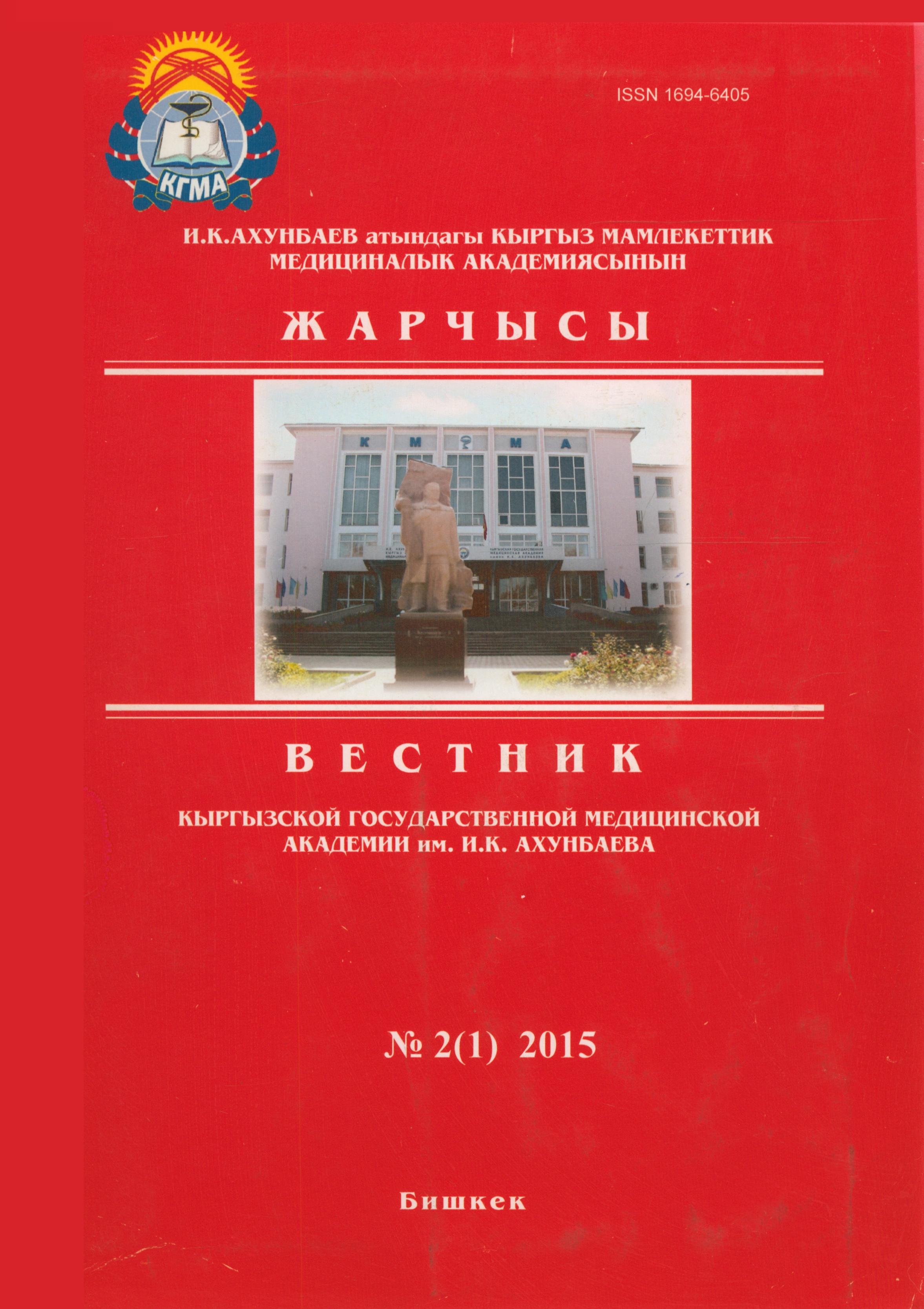ATRIAL FIBRILLATION: RISK FACTORS AND CAUSES OF DEVELOPMENT
Abstract
To identify the most common causes of atrial fibrillation (AF), to develop methods of successful prevention of the disease. Survey included patients with AF, who are hospitalized in the clinical departments of The National Centre of Cardiology and Therapy named by M. Mirrakhimov. The survey includes a detailed collection of complaints, anamnesis, and clinical examination with measurement of blood pressure, anthropometric indicators, a complex of laboratory and instrumental methods of investigation. Detect the functional classes of chronic heart fairway passed by NYHA classification. Survey included 25 patients (9 men, 16 women) with AF. In the group surveyed, only 36% patients determined by a normal body weight, other 32% had overweight and 32% - varying degrees of obesity. In assessing the etiology AF revealed that only 3 patients (12%) had primary AF, while the remaining 22 (88%) - compared to other diseases. Among them, the most frequently encountered coronary heart disease (52%), hypertension (44%), 2 type of diabetes mellitus (20%).
The survey revealed that in 64% cases patients had overweight and obesity. Also found an association between the development of AF and the presence of CHD patients, GB, diabetes type II, in connection with which it is advisable to carry out the primary prevention of the cardiovascular diseases.
Keywords:
obesity, chronic heart fairway, causes of.References
1. Braunwald E. Shattuck lecture- cardiovascular medicine at the turn of the millennium: triumphs, concerns, and opportunities. N Engl J Med 1997; 337:1360-1369.
2. Кушаковский М.С. Фибрилляция предсердий: причины, механизмы, клинические формы, лечение и профилактика. СПб: Фоллиант, 1999.
3. Atrial fibrillation: current understandings ans researchs imperatives. The National Heart, Lung, and Blood Institute Working Group on Atrial Fibrillation.1998
4. Valentin Fuster, with writing committee. ACC/AHA/ESC Practice Guidelines for the Management of Patients with atrial fibrillation. A report of the American College of Cardiology.
5. Friberg J, Buch P, Scharling H, et al. Rising rates of hospital admissions for atrial fibrillation. Epidemiology 2003; 14 (6): 666–672.
6. WHO: Global Database on Body Mass Index. 1997
7. Raphael CL, Briscoe C, Davies J, et al. Limitations of the New York Heart Association functional classification system and self-reported walking distances in chronic heart failure. Epub 2006 Sep 27.
8. Wanahita N, Messerli FH, Bangalore S, et al. Atrial fibrillation and obesity- results of a meta- analysis. Am Heart J 2008; 155:310-315.
9. Бойцов С.А., Подлесов А.М. Мерцательная аритмия.// СПб: «ЭЛБИ-СПб», 2001; 26-33.
10. Psaty BM, Manolio TA, Kuller LH, et al. Incidence on and risk factors for atrial fibrillation in older adults. Circulation 1997; 96: 2455-2461.
11. Wilhelmsen L, Rosengren A, Lappas G. Hospitalizations for atrial fibrillation in the general male population: morbidity and risk factors. J Intern Med 2001; 250:382-389.
12. Mohaved MR, Hashemzadeh M, Jamal MM. Diabetes mellitus is a strong, independent risk for AF and flutter in addition toothier cardiovascular disease. Int J Cardiol 2005; 105:315-318.



